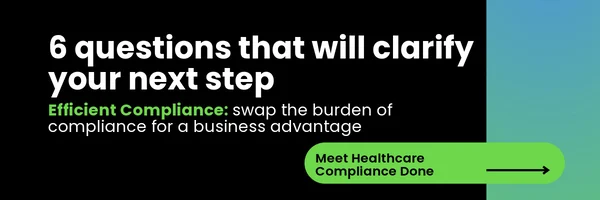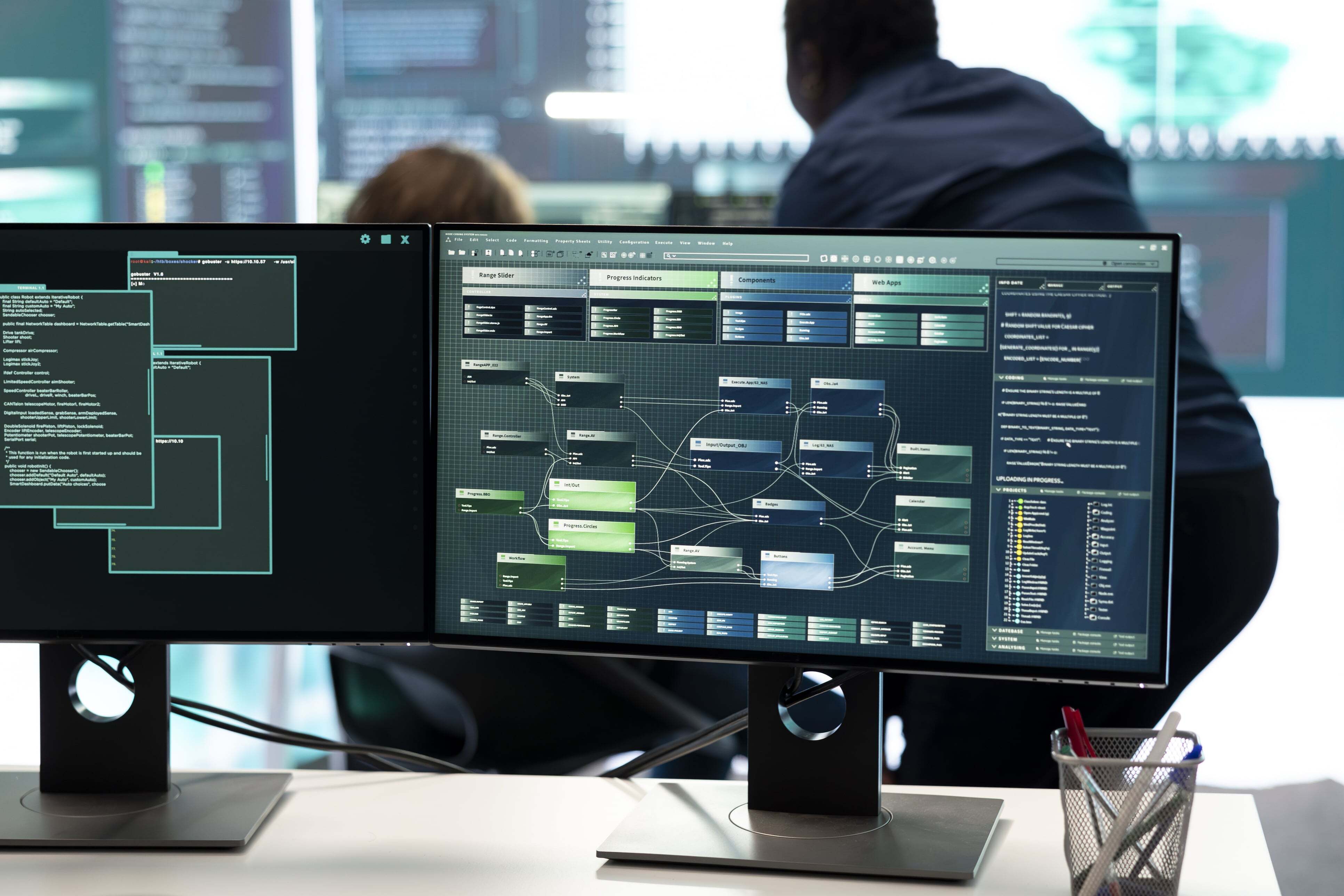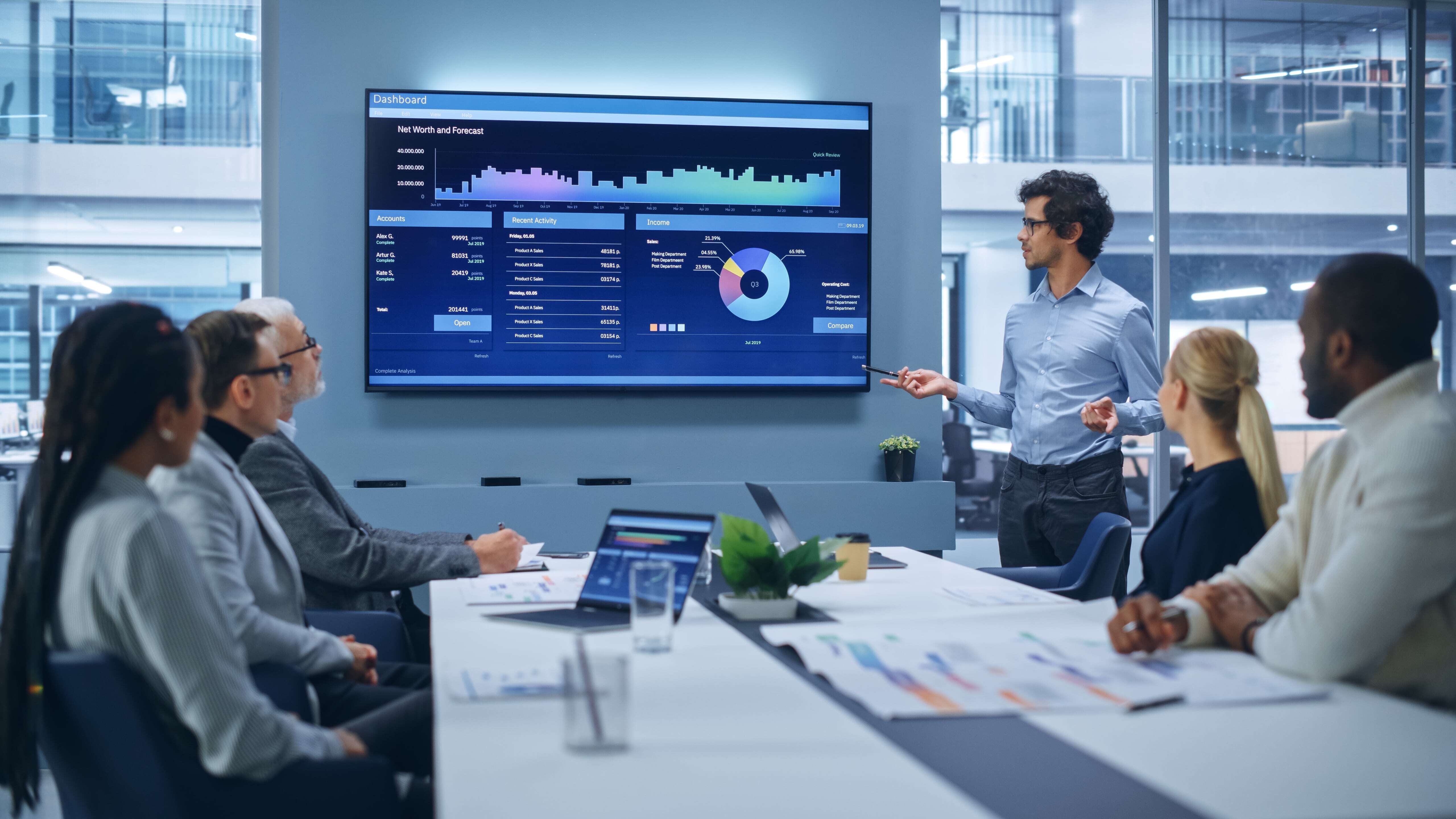The Colonial Pipeline ransomware attack in 2021 highlighted a critical issue: traditional security assessments are insufficient. In today's complex threat environment, continuous monitoring has become essential. Regulatory bodies like NIST 800-53, HIPAA, and FedRAMP now require ongoing support to manage risks effectively.
Information security continuous monitoring (ISCM) ensures ongoing awareness of security threats. It helps in making informed risk management decisions. With cybersecurity continuous monitoring, you can monitor your IT infrastructure in real-time. This proactive strategy is crucial in a world where threats are constantly evolving. Today, real-time security monitoring services and cyber monitoring tools are key to strengthening your cybersecurity.
Key Takeaways
- Continuous monitoring is essential for recognizing and addressing potential threats in real-time.
- This strategy includes application layer, infrastructure, and network monitoring to offer a holistic view of your security environment.
- Automated alerts and faster incident responses can substantially reduce the mean-time-to-resolution (MTTR).
- Organizations with fully implemented and up-to-date security AI and automation tools can detect breaches nearly 70% faster than those without.
- ISCM helps meet regulatory requirements from frameworks like HIPAA, FedRAMP, and NIST, thereby ensuring continuous compliance.
- Timely, accurate, and relevant information is crucial, especially when resources are limited.
- Automated processes make continuous monitoring more cost-effective and efficient.
Understanding Cybersecurity Continuous Monitoring
In today's fast-changing threat landscape, grasping the subtleties of continuous security monitoring is crucial for protecting digital assets. By using advanced tools and technologies, companies can continuously evaluate and manage risks. This ensures the ongoing safeguarding of sensitive information.
Definition and Importance
Continuous security monitoring is about creating a regime to monitor an organization’s security controls and overall security posture in real-time. It involves gathering data from various sources, like system logs, network traffic, and application activities. This data is then analyzed to spot and act on potential threats. Effective use of cybersecurity monitoring solutions can cut the time to detect threats by up to 80%, boosting the overall cybersecurity plan.
Core Components
A successful continuous monitoring framework has several key elements. At its core, a strong system must use automated tools for data collection and analysis that can handle large data volumes. It also needs advanced analytics to spot suspicious activities. Furthermore, adding threat intelligence can greatly improve detection, with the vast majority of security experts seeing its value.
Key Benefits
Companies that adopt efficient network security monitoring solutions see many advantages. They report a 30% drop in successful cyberattacks, thanks to better detection and response times from continuous monitoring. Also, they find it easier to keep up with regulatory requirements, like SOC 2 and ISO 27001, which can cut non-compliance penalties by up to 50%. Plus, 24/7 monitoring allows for quick action on urgent threats, reducing potential damage.
The Priority of Continuous Monitoring in Cybersecurity
In the ever-changing world of cybersecurity, continuous monitoring has become essential. It goes beyond the traditional periodic assessments, offering a 24/7 live stream of an organization’s security posture. This constant surveillance system not only aids in cyber threat detection but also keeps an organization's security posture strong. It also boosts incident response capabilities.
Real-time Threat Detection
Real-time cyber threat detection is at the heart of continuous monitoring. Unlike traditional methods, which are essentially snapshots, continuous monitoring provides a dynamic and updated view of potential threats. For example, organizations can leverage real-world threat intelligence integration to focus remediation efforts. This approach significantly reduces business risk by minimizing the time between threat detection and response.
Maintaining Security Posture
Maintaining a robust security posture is crucial in today’s digital world. The aim is optimize the cybersecurity posture by identifying security gaps across the entire attack surface. Additionally, Pen Testing as a Service (PTaaS) provides ongoing protection against evolving vulnerabilities, supporting applications that handle sensitive data.
Enhanced Incident Response
The ability to swiftly respond to incidents is vital for mitigating damage. Continuous monitoring provides organizations with actionable insights that enable faster and more effective incident responses. Many tools offer real-time attack surface discovery, ensuring that security teams can promptly address emerging threats. Moreover, these systems integrating proactive threat hunting capabilities allow for quicker identification and remediation of issues before they escalate.
Continuous monitoring is not just a technological enhancement but a strategic necessity. It maintains a strong security posture, improves incident response times, and ensures robust threat intelligence integration.
A comparative look at traditional testing methods and continuous monitoring highlights distinct advantages:
| Aspect | Traditional Pen Testing | Continuous Monitoring |
|---|---|---|
| Assessment Frequency | Periodic | 24/7, Continuous |
| Threat Detection Speed | Slower, Snapshot-based | Real-time |
| Cost-effectiveness | Cost-effective for specific verifications | Predictable cost model with PTaaS |
| Response Time | Delayed | Immediate, Enhanced |
| Scope | Narrow, Single Point-in-time | Broad, Comprehensive |
Frameworks That Require Continuous Monitoring
Many frameworks require continuous monitoring to ensure compliance and maintain security. Let's delve into some key frameworks that stress the importance of continuous monitoring.
NIST SP 800-137 and NIST SP 800-137A
The NIST cybersecurity framework outlines guidelines like NIST SP 800-137 for continuous monitoring. Introduced in 2024, NIST Cybersecurity Framework 2.0 updated the 2018 version. It focuses on six core functions: Identify, Protect, Detect, Respond, Recover, and Govern. Continuous monitoring supports these functions, enabling real-time risk assessment and prioritized mitigation.
ISO Standards
ISO security standards, like ISO 27001 and ISO 27002, are globally recognized. They validate strong cybersecurity programs. Continuous monitoring aligns with ISO 27001, especially in access control and physical security. This ensures timely detection and response to threats, vital for compliance.
CNSSI 4009-2015
CNSSI security guidelines which detail the requirements for those involved with national security, notably CNSSI 4009-2015, stress continuous monitoring. They aim to protect critical information's confidentiality, integrity, and availability. This framework supports the early identification of security incidents and vulnerabilities, boosting your organization's response capabilities.
FedRAMP
For FedRAMP compliance, continuous monitoring is essential. FedRAMP demands high-security standards from cloud service providers. Continuous monitoring proves control effectiveness, aiding in threat detection, alerting, and incident response.
Adopting continuous monitoring within these frameworks boosts your risk management. It ensures compliance and strengthens your security posture.
Components of a Continuous Security Monitoring Plan
A robust continuous security monitoring plan is essential for safeguarding your organization's data and infrastructure. By integrating threat intelligence, automating processes, and managing incident responses effectively, you can develop a comprehensive and scalable cybersecurity solution.
Threat Intelligence Integration
Incorporating threat intelligence is a cornerstone of effective continuous security monitoring. Real-time insights from various sources, including the dark web, help identify potential threats early. For example, continuous monitoring of dark web sources provides intelligence on emerging attacks, enhancing your ability to detect threats.
"Dark web monitoring allows security teams to gather information on threat actors and their methods, which can preemptively inform security strategies." - Jason Ford, Cybersecurity and Compliance Expert
This proactive approach to threat intelligence integration allows organizations to tailor their security measures based on specific risks, thereby enhancing overall security posture.
Automation and Scalability
Automation is crucial for scalable cybersecurity solutions. Automated security monitoring can track a range of devices, including laptops, desktops, mobile phones, and IoT devices, ensuring comprehensive oversight. For instance, UpGuard's continuous monitoring solutions can automatically run asset discovery processes daily using trusted commercial, open-source, and proprietary methods.
A key advantage of automation is its ability to detect vulnerabilities quickly, minimizing downtime and reducing onboarding time for new vendors. Organizations that implement continuous monitoring are better positioned to expose cyber risks immediately during the vendor lifecycle, enhancing their security posture efficiently.
| Component | Benefit |
|---|---|
| Automated Security Monitoring | Real-time visibility into the attack surface |
| Scalable Cybersecurity Solutions | Effortlessly adapt to organizational changes |
| Threat Intelligence Integration | Proactive threat detection and response |
Incident Response Management
Effective incident response management is another vital component of a continuous security monitoring plan. The ability to swiftly address security incidents through well-defined incident response strategies can significantly limit potential damage. Continuous monitoring solutions provide real-time alerts, enabling your security teams to act promptly.
This real-time approach allows for customized assessments, helping organizations maintain compliance with regulatory frameworks and optimize resource allocation. Faster threat identification and response mitigates the impact of cyber-attacks, safeguarding sensitive data and ensuring business continuity.
Organizations that continuously monitor their third-party vendors are better positioned to identify and address cyber risks during the onboarding process and throughout the vendor lifecycle. By integrating these components into your continuous security monitoring plan, you can create a resilient defense mechanism against various cyber threats.
Implementing a Continuous Approach to Cybersecurity
Adopting a continuous approach to cybersecurity is crucial for managing and mitigating evolving cyber threats. A robust security monitoring strategy is key to staying ahead of potential issues. Continuous control automation plays a vital role, using advanced technologies to audit and monitor IT infrastructure controls.
Security Information and Event Management (SIEM) systems are essential for continuous monitoring. They aggregate log data from various sources, offering a centralized view of security events. This view is critical for detecting anomalies and suspicious activities in real-time, enhancing your ability to respond swiftly to threats. Endpoint Detection and Response (EDR) solutions also enable continuous monitoring of endpoint activities, capturing detailed information about processes, file changes, and user behaviors.
Integrating Cloud Security Posture Management (CSPM) systems into your security monitoring strategy is imperative. CSPM systems continuously assess and monitor cloud environments, scanning for misconfigurations and vulnerabilities in real time. This real-time assessment is critical for reducing the risk of breaches and data loss. Automated control monitoring also enhances continuous risk assessment, allowing for an accurate, real-time evaluation of your organization's cyber risk posture.
Effective incident response plans are a key component of a comprehensive continuous cybersecurity approach. These plans are designed to minimize damage and facilitate rapid recovery when security incidents occur. Continuous control automation greatly enhances these plans by performing repetitive tasks more quickly and accurately than manual processes. This not only improves efficiency but also ensures that your cybersecurity measures are always up-to-date.
Another priority are continuous controls monitoring (CCM) products that significantly enhance your ability to monitor and assess risk. These products enable detailed reporting and streamline control mechanisms from various frameworks into a centralized, automated system. This improves operational excellence and reduces the need for manual efforts, ensuring that you maintain an optimal security posture.
A well-structured approach to continuous monitoring also includes regular assessments of your overall security strategy. These assessments should be conducted at least every three years or as dictated by your monitoring plans and regulatory requirements. Regular reviews help you stay compliant with industry regulations and standards, thereby maintaining your organization's credibility and reducing the risk of legal or financial penalties.
The benefits of implementing a continuous approach to cybersecurity are manifold. Continuous monitoring provides real-time insights into your IT systems and networks, enabling immediate responses to potential threats. This proactive stance not only decreases incident resolution times but also contributes to a more consistent performance by reducing operational downtime. Continuous risk assessment and control monitoring ensure that your security measures remain effective and up-to-date, safeguarding your organization against the rapidly evolving threat landscape.
Evaluating Support Options for Continuous Monitoring
In the realm of cybersecurity continuous monitoring, deciding between internal teams and external vendors is crucial. This choice significantly affects your organization's security. We'll explore the effectiveness, resource needs, and financial aspects of both options.
Internal Teams vs. External Vendors
Internal teams know your organization's network, security history, and culture well. They can quickly adapt and work well with other departments. But, finding and keeping skilled cybersecurity professionals is hard, which can strain your team.
External implementors and advisors, however, offer specialized skills, advanced tools, and broad experience. They focus on managing risks from third-party vendors, ensuring a solid security plan. While they might cost more upfront, they can save money in the long run by reducing training needs and ensuring a sustainable approach to continuous monitoring.
Cost-Benefit Analysis
It's key to do a cost-benefit analysis to see the value of different monitoring solutions. Building and sustaining internal teams involves considerable costs for recruitment, training, and retention. On the other hand, external vendors offer scalable solutions and quick threat detection, saving time and money.
Recent data shows that using real-time threat intelligence and automated responses can cut data breach costs. Regulations require real-time monitoring, making outsourcing a good way to meet these standards. It's important to consider these points to choose the best option for your budget and security needs.
Finding Experienced Support
Finding support that brings a depth of experience to your unique needs is a critical part of the selection criteria for external support. Look for teams that bring direct and hands-on experience in creating and maintaining the essential cybersecurity frameworks that apply in your industry. When a support team has implemented the controls and monitoring that you need in their own businesses and alongside well-respected auditors, you gain a significant advantage in both the quality and trustworthiness of your plan.
Case Studies
Looking at cybersecurity case studies gives us practical lessons on monitoring strategies. For example, the healthcare sector has improved security by using real-time monitoring and vendor services.
In the financial sector, continuous monitoring has led to faster incident detection and fewer false alarms. This ensures quick and accurate threat response. Regular penetration tests, combined with continuous monitoring, help these companies stay ahead of threats.
By studying these examples, you can learn how top companies handle continuous monitoring. They've built effective and lasting security frameworks.
->Discover how support providers build and manage monitoring systems in our latest case study.
Cybersecurity Continuous Monitoring Best Practices
In today's digital world, the rise in security incidents has been alarming, escalating at a staggering rate over the last two decades. To combat this, a comprehensive approach to continuous monitoring is essential. This includes automated security monitoring, regular vulnerability assessments, and proactive threat hunting. These strategies collectively protect your organization from cyber threats.
Automated Security Monitoring
Automated security monitoring tools are vital for effective cybersecurity. They offer real-time insights into your IT environment, a necessity for 90% of security decision-makers. These tools analyze vast amounts of data from various endpoints, enhancing early threat detection and response. For instance, Security Information and Event Management (SIEM) systems automate data collection and analysis, aiding in compliance reporting and reducing the risk of hefty fines.
Regular Vulnerability Assessments
Regular vulnerability assessments are critical for identifying and mitigating security weaknesses. Statistics show that 70% of breaches stem from unpatched vulnerabilities, highlighting the need for automated scans and assessments. Continuous vulnerability scanning in your monitoring plan helps identify vulnerabilities before they are exploited. Moreover, 75% of organizations report improved security posture through proactive vulnerability management.
Proactive Threat Hunting
Proactive threat hunting is about actively searching for potential threats within your network. It's essential for identifying and mitigating risks before they cause significant harm. Recent data indicates that 60% of organizations with continuous monitoring see a significant decrease in successful cyberattacks. Threat hunting not only quickens incident response but also leverages threat intelligence for enhanced protection against new threats. This approach has led to 80% of organizations reporting improved security outcomes.
| Key Aspect | Impact | Statistics |
|---|---|---|
| Automated Security Monitoring | Improves real-time visibility and compliance | 90% of security decision-makers find real-time visibility crucial |
| Regular Vulnerability Assessments | Uncovers and mitigates vulnerabilities promptly | 70% of breaches are attributed to unpatched vulnerabilities |
| Proactive Threat Hunting | Reduces risk of successful cyberattacks | 60% of organizations see reduced cyberattacks |
Tools and Frameworks for Continuous Monitoring
In today's fast-paced cybersecurity world, a strong continuous monitoring strategy is vital. Advanced tools and platforms are key to detecting and responding to threats effectively. Here, we delve into essential tools and frameworks for continuous monitoring.
Security Information and Event Management (SIEM)
SIEM tools are crucial for continuous monitoring, aggregating, and analyzing data from various sources. They identify anomalies, threats, and breaches in real time. Popular SIEM tools include:
- Splunk - Offers comprehensive data analysis, available in both free and paid versions.
- IBM QRadar - Provides a unified architecture for integrating security information, ensuring faster threat detection and response.
- Microsoft Sentinel - Known for its automation playbooks and tight integration with Azure.
Utilizing these SIEM tools, organizations can enhance their real-time monitoring. This ensures robust endpoint security management and quick incident resolution.
Endpoint Security Solutions
Endpoint security management is a critical part of continuous monitoring. It focuses on securing end-user devices, often the entry points for cyber threats. Key endpoint security solutions include:
- Sentinel One - Offers advanced threat protection and real-time monitoring solutions.
- CrowdStrike Falcon - Provides integrated defense mechanisms against ransomware, malware, and other cyber threats.
- Microsoft Defender for Endpoint - Known for its robust malware detection and advanced threat protection capabilities.
Endpoint security management ensures devices within the organization are continuously protected. This reduces the risk of security breaches and enhances the overall security posture.
Federal ZenGRC for Real-Time Monitoring and Incident Response
Federal ZenGRC is a versatile platform designed for real-time monitoring and incident response. It streamlines compliance efforts and manages security risks effectively. This platform offers multiple features for continuous monitoring, including:
- Automated Risk Assessments - Helps organizations identify and prioritize risks effectively.
- Compliance Tracking - Maintains continuous compliance with various regulatory frameworks such as SOC2, ISO 27001, and HIPAA.
- Incident Response - Enables quick response to detected threats, minimizing potential damage.
With Federal ZenGRC, which is approved for both FedRAMP and GovRAMP requirements, companies can achieve higher security readiness. It integrates real-time monitoring solutions into operational workflows, ensuring swift and effective incident management.
Integrating Continuous Monitoring into Your Security Strategy
The cybersecurity threat landscape is rapidly changing, with cyber-attacks continuing to rise in 2024. It's crucial for organizations to adopt a comprehensive cybersecurity approach. This includes integrating continuous monitoring to strengthen their security posture. Continuous monitoring is key to strategic risk management, offering real-time insights into suspicious activities. It enables quick responses to emerging threats and helps reduce the average six-figure cost of data breaches.
To effectively integrate continuous monitoring, start by understanding your organization's unique needs and vulnerabilities. Continuous monitoring systems include four main components: monitoring applications, analytics tools, dashboards, and notification systems. These elements work together to provide a comprehensive view of your security environment. This ensures you can detect and respond to threats quickly. Endpoint monitoring is especially important, as endpoints are a major entry point for cyber attacks.
Modern technologies like AI and machine learning can greatly enhance your continuous monitoring efforts. These technologies improve visibility and response times, helping your organization stay ahead of threats. Continuous Threat Exposure Management (CTEM) is a proactive approach that incorporates continuous monitoring into a 5-stage process. CTEM offers complete visibility into your security posture, helping you identify and manage risk more effectively. Regular updates and reviews of your monitoring strategy are essential to maintain its effectiveness and ensure compliance with regulations like FedRAMP, NIST, and HIPAA.
Organizations that successfully integrate continuous monitoring into their security strategy often experience fewer data breaches and lower costs. By automating many aspects of security monitoring and integrating them with incident response plans, you can build a resilient defense against the ever-growing threat landscape. Continuous monitoring is not just a tool but an essential practice for a robust, proactive cybersecurity strategy.
FAQ
What is cybersecurity continuous monitoring?
Cybersecurity continuous monitoring is a proactive method. It involves ongoing assessment and tracking of IT networks and systems. This aims to detect vulnerabilities, threats, and compliance issues in real-time. It ensures security risks are identified and managed continuously, offering a comprehensive view of your IT infrastructure.
Why is real-time threat detection important in cybersecurity?
Real-time threat detection is vital. It allows for immediate identification of potential security incidents. This reduces the time attackers have to exploit vulnerabilities. Fast detection accelerates incident response times, mitigates damage, and maintains the security posture of an organization.
What are the key components of a successful continuous monitoring plan?
A successful continuous monitoring plan includes threat intelligence integration, automation, and scalability. It also involves robust incident response management. It should incorporate real-time monitoring, proactive threat hunting, and continuous vulnerability assessments for comprehensive security coverage.
How does continuous monitoring help in maintaining compliance with security frameworks?
Continuous monitoring aids in maintaining compliance with security frameworks like NIST SP 800-137 and ISO standards. It provides automated assessments and continuous control monitoring. This ensures your organization adheres to security standards by regularly updating and patching vulnerabilities.
What are the benefits of automated security monitoring?
Automated security monitoring offers several benefits. It improves threat detection accuracy, reduces manual workloads, and enhances operational efficiency. It allows for continuous monitoring with minimal human intervention, ensuring consistent security measures.
What is proactive threat hunting, and why is it important?
Proactive threat hunting involves searching for potential security threats before they cause harm. It's crucial because it allows security teams to identify and address vulnerabilities and threats early. This proactive approach enhances security posture and reduces the risk of costly incidents.
How do SIEM solutions aid in continuous monitoring?
Security Information and Event Management (SIEM) solutions aid in continuous monitoring by aggregating and analyzing security data in real-time. SIEM tools provide centralized visibility into security events. This enables faster detection, investigation, and response to security incidents.
What role do endpoint security solutions play in continuous monitoring?
Endpoint security solutions are critical in continuous monitoring. They protect individual devices within a network. They offer real-time threat detection, vulnerability management, and automated incident response capabilities. This ensures all endpoints are continuously monitored and secured.
How can Federal ZenGRC be used for real-time monitoring and incident management?
Federal ZenGRC is a platform for real-time monitoring and incident management. It helps organizations maintain continuous compliance and manage risks. It provides automated assessments, integrates with existing security controls, and streamlines incident response processes. This tool facilitates efficient monitoring and quick resolution of security threats.
What are the best practices for cybersecurity continuous monitoring?
Best practices include implementing automated security monitoring tools and conducting regular vulnerability assessments. Proactive threat hunting is also essential.






